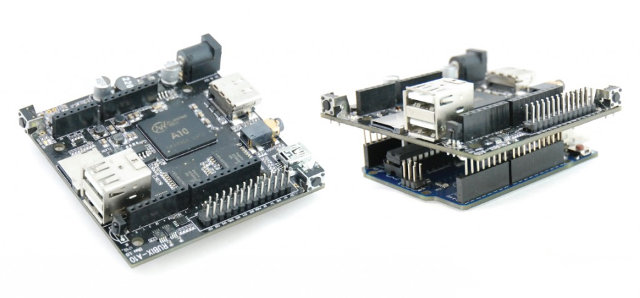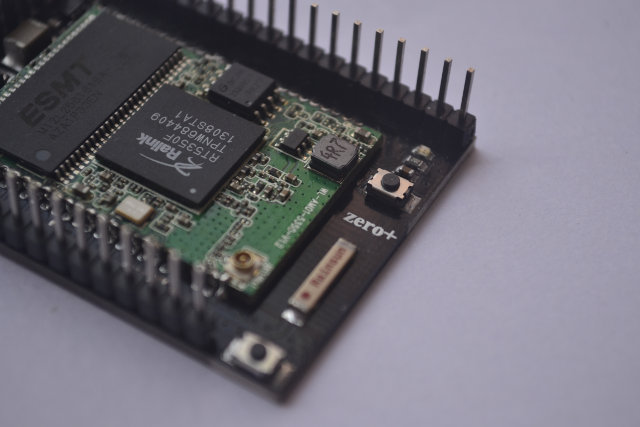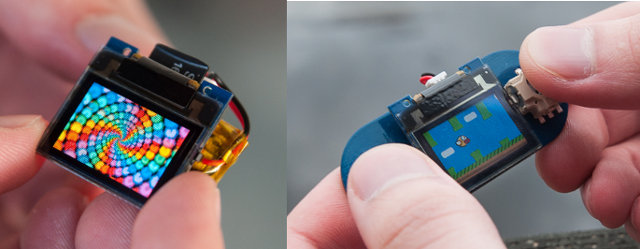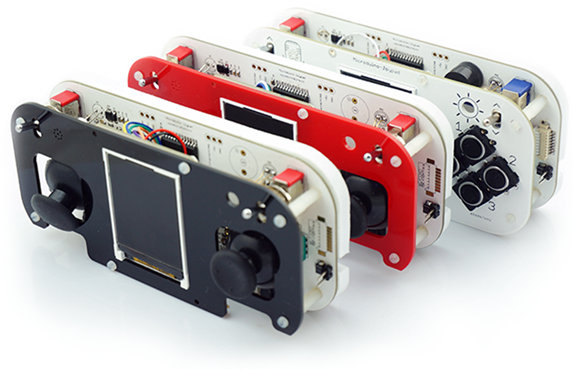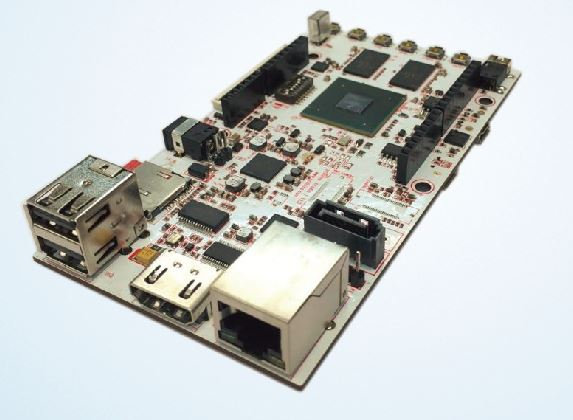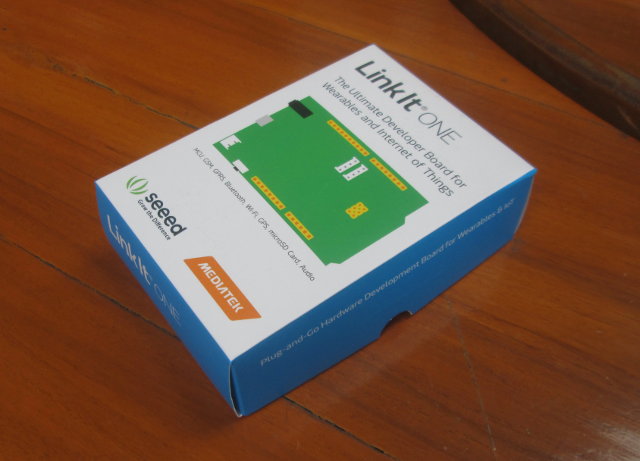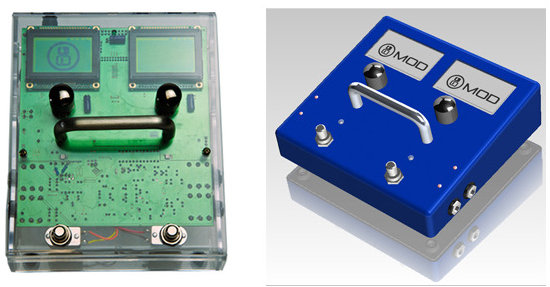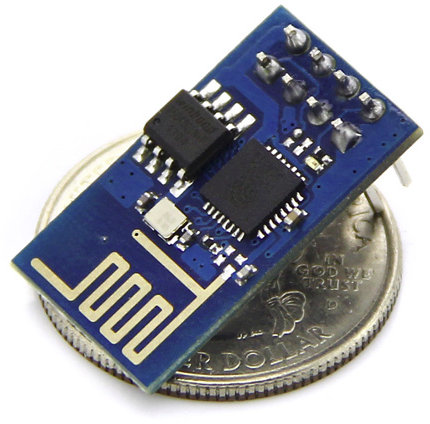There are plenty of ARM Linux boards featuring Arduino compatible headers such as UDOO, PcDuino, ATSAMA5D3 Xplained, etc…, and Rubix A10 looks like one of these boards, as it comes with an Allwinner A10 processor, boast Arduino compatible header, and runs Linux or Android, but instead of simply accepting Arduino shields, Rubix A10 can be used as a shield itself for Arduino (UNO?)boards. Rubix A10 specifications: SoC – Allwinner A10 ARM Cortex A8 processor @ 1.0 Ghz with Mali-400 GPU System Memory – 1GB DDR3 Storage – 4 to 8 GB MLC 64-bit ECC NAND Flash, micro SD slot up to 128 GB Video Output – HDMI 1.4 up to 1080p60 Audio I/O – HDMI, 3.5 mm jack for MIC + headphone. Connectivity – 802.11b/g/n Wi-Fi up to 150Mbps, USB – 2x USB 2.0 host interfaces, 1x mini USB OTG 2.0 port Expansions Headers Arduino compatible headers 26-pin Raspberry Pi […]
Zero+ IoT Wi-Fi Board is Programmable with Lisp (Crowdfunding)
There have been so many low cost Wi-Fi modules and boards with GPIO headers announced this year, especially on crowdfunding sites, and from the hardware point of view, Zero+ (Zero Plus) board looks very much like many other Ralink RT5350 boards such as Vocore or AsiaRF AWM002, but what makes it different is that it can be programmed with Lisp from a web-based IDE. But let’s go through Zero+ board specifications first: SoC – Ralink/Mediatek RT5350 MIPS processor @ 360MHz with dual band 802.11n Wi-Fi with data Rate up to 150Mbps System Memory – 32 MB RAM Storage – 8MB to 16 MB SPI Flash (for firmware) Expansions Headers – 2x headers with access to I2C, SPI, USB, 2x UART, JTAG, and 14x GPIOs USB – 1x USB host port, 1x micro USB for power Misc – 2x buttons Dimensions – 36 x 25mm (possibly module dimensions only, not full board). I’m […]
$25 TinyScreen is an OLED Display for TinyDuino Arduino Compatible Board (Crowdfunding)
Back in 2012, Tiny Circuits launched a Kickstarter campaign for TinyDuino, an Arduino compatible board that’s… tiny, based on Atmel Atmega328P, and supports tiny stackable shields in a similar fashion to Microduino (launched in 2013). The campaign was successful, and the company is now back on Kickstarter with TinyScreen, an OLED display that can be stacked on top of TinyDuino to create a smartwatch, a minuscule gamepad, smart glasses, and more. TinyScreen technical specifications: 96×64 OLED display, 16-bit color depth 0.96″ (24.4mm) viewable area Software controllable backlight (OLED brightness) Power down mode Four push buttons along the sides (connected to IO pins) SPI interface for display Power Supply – 3.0V to 5.5V operation (higher voltages supported with TinyShield power regulator) Power Consumption – 20 – 45mA max supply current (depending on brightness) Dimensions – 25.8mm x 25.0mm Programming of TinyDuino can be done through a web interface for Arduino called […]
Arduino Compatible Microduino JoyPad with TFT Display Lets You Play Games, Control Devices, and More (Crowdfunding)
Last year, Microduino successfully launched their tiny Arduino board and shields via Kickstarter, and they are now back on Kickstarter with Microduino Joypad, an other Arduino compatible board that also happens to be a gamepad with a small OLED display. It can be used in standalone to control games on the tiny display, as a gamepad for PC or game console, a control interface for quadcopters and robots etc… Microduino Joypad (main board) specifications: MCU – Atmel ATMega328p/1284p/644p or 32U4 via Microduino Core, Core+, CoreUSB boards. (Not part of board but included in all perks) Display I/F – TFT and OLED headers. Separate TFT display board included in all perks. Controls – Left and right joysticks, 4 buttons, and left and right switches. Audio – Microphone Sensors – Light sensor, temperature sensor USB – 2x micro USB ports: one for power and one for charging Expansions – 2x UPin27 headers for […]
pcDuino Acadia 1 is a Freescale i.MX6 Quad Development Board with Arduino Headers
Linksprite has been pretty busy recently. After announcing the $39 pcDuino3 Nano, they’ve now unveiled a new board named pcDuino Acadia 1 powered by Freescale i.MX6 Quad processor with 1GB RAM, 8GB eMMC, a few common ports, and Arduino headers in order to connect Arduino shields to their Linux/Android board. pcDuino Acadia 1 (preliminary) specifications: SoC – Freescale i.MX6 Quad with four ARM Cortex A9 cores up to 1.2GHz, and Vivante GC2000 GPU with support for OpenGL/ES 2. x, OpenCL EP support, and OpenVG 1.1. System Memory – 1GB DRAM Storage – 8GB eMMC, 2x micro SD card slots (up to 128GB), and SATA Video Output – HDMI 1.4 with HDCP support, LVDS Audio Output – 3.5mm analog audio interface Camera – 1x MIPI, 1x CSI Connectivity – 10/100/1000Mbps Ethernet (limited to 470Mbps) USB – 2x USB 2.0 host ports, 1x micro USB OTG Expansion Headers – Arduino UNO compatible […]
Getting Started with LinkIt ONE Development Kit for Wearables & IoT
After going through WRTnode Quick Start Guide, it’s now time to play with LinkIt ONE, the IoT development board from Mediatek designed by Seeed Studio. LinkIt ONE is the first Hardware Development Kit (HDK) for Mediatek LinkIt, so there may be a LinkIt TWO, and/or other hardware platforms in the future. LinkIt ONE specifications Let’s quickly go through the specifications first: Processor – Mediatek MT2502A (Aster) ARM7 EJ-STM processor @ 260 MHz System Memory – 4 MB Storage – 16MB Flash for firmware + micro SD slot shared with SIM slot for up to 32GB additional storage Connectivity: Wi-Fi – 802.11 b/g/n (MT5931) with external antenna Bluetooth – BR/EDR/BLE(Dual Mode) GPS – Mediatek MT3332 with external antenna GSM/GPRS – 850/900/1800/1900 MHz band, Class 12 GPS with external antenna Audio – 3.5mm headphone jack (including mic support) – Support for MP3, AAC, and AMR codecs. Serial – Software Serial (Serial), and […]
Linux based MOD Duo Multi-Effects Pedal is Powered by an AllWinner A20 SoM (Crowdfunding)
If you are both a maker and a musician, MOD Duo multipurpose pedal may be a fun “toy” to play with. It’s an embedded computer comprised of a Hi-Fi soundcard (baseboard) powered by the same ITEAD Studio A20-CORE system on module found in ITEAD Studio IBOX, fitted into an enclosure with a pedalboard interface, and two graphics displays. You can create and share your own effects, or download the one made by the community using LV2 sound plugins, an open sound processing standard. A MOD Arduino Shield is also available to create new peripherals. Some technical specifications of the MOD Duo: SoC – AllWinner A20 dual core Cortex A7 processor @ 1GHz (AllWinner A23 is part of stretch goals) Two audio inputs Two audio outputs Stereo headphones output MIDI IN and MIDI OUT Cirrus Audio Codec USB – 1x USB Host for bluetooth, Wifi adapters and MIDI peripherals, 1x USB […]
ESP8266 WiFi Serial Module Costs Just $5
Wi-Fi is great because it’s ubiquitous, and rather fast for a wireless standard. However, it drains batteries fast, and Wi-Fi modules are usually much more expensive than Bluetooth modules for instance. There’s not much that can be done with regards to power consumption, but thanks to ESP8266 module, it’s now feasible to add Wi-Fi to your Arduino board, or others, for just $5 including shipping on Aliexpress, but SeeedStudio also have it for $6.95. If you buy 1,000 pieces, it goes down to about $3 per unit. As reported by Hackaday, this module embeds ESP8266 SoC which takes care off all IP stacks, a bit like Texas Instruments CC3000 SoC, but it’s just much cheaper. Here are some of the specifications of the module (and processor): SoC – Espressif Systems ESP8266 32-bit RISC processor with 802.11 b/g/n support(32-pin QFN package), Interfaces: SDIO 2.0, SPI, UART, I2S Wi-Fi – 802.112 b/g/n […]


